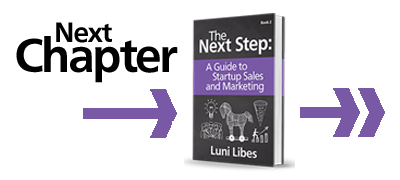Most products require more than one sales call (or meeting, email, etc.). That means most sales calls do not end in a sale.
If you diagram out the number of customers in each stage of your sales process, it will resemble the shape of a funnel.
In a typical funnel, customers enter the “top” of the funnel from your marketing team’s efforts. These are “unqualified” leads. Your marketing team should know that they are part of the target market for your product, but often they don’t know if those leads actually have the problem your product solves or if they are using a competitor’s product already. Maybe they aren’t looking to buy a solution now, or maybe they don’t have any money in their budget to buy.
It is the sales team’s job to answer those questions, i.e., to “qualify” those leads. The result of that process is a smaller list of potential customers who are likely interested in what you are selling and who seem to have the inclination and money to buy.
Often, it takes a few more conversations to determine which of these qualified leads are truly interested in what you are selling and, of those, which are likely to buy now versus in the future. Those are your “prospects.”
Eventually, one of these prospects will buy your product. They will give you money, and you will give them your product/service. This is called “closing a sale,” and that prospect is now a customer and has reached the “bottom” of your funnel. That, however, is not the end of the sales process!
Once you have customers, consider how you will sell more of your product or service to them. You need to focus on keeping your customers happy and communicating to them a different message from the message you send to the potential customers who haven’t bought anything yet. A strong customer reference is a very valuable sales tool.
The way you move leads through the sales funnel is different for different types of products/services. That is to say, you need to understand the “sales funnel” that is specific to your product/service. Each product has a different set of steps required to close a sale, a different percentage of drop-offs between steps/stages, and a different amount of time between those stages.
Let’s look at a few different sales funnels.
Retail Store
- Unqualified Lead: People who walk past the store
- Qualified Lead: People who walk into the store
- Prospect: People who look at and touch the merchandise
- Customer: People who buy
- Repeat Customer: Customers who return to buy more
Web-based service
- Target Customer: People who search for services like yours
- Visitor: People who visit your website
- Engaged Visitor: People who read more than one website page
- Registered Account: People who register an account
- Subscriber: Customers who subscribe to the service
- Active Subscriber: Customers who use the service
- Pro Subscriber: Customers who upgrade their subscription
Restaurant
- Target Customer: People who hear about the restaurant
- Customer: Customers who sit down to eat a meal
- Repeat Customer: Customers who return to eat again
- Regular Customer: Customers who are “regulars”
Which of these is most like your sales funnel? Take a half hour, use these examples, and create your own sales funnel that best fits your product or service.
Now, with your sales funnel, make an educated guess as to what percentage of people will disappear from stage to stage. Think about how you can measure the number of people in each stage as you run your sales process, so that you can keep track of that percentage. Now, estimate the average amount of time each person will sit in each stage.
What you can measure, you can manage.
Managing a sales funnel means making changes to improve your metrics, lowering the drop-off between stages, and shortening the time. Changes such as:
- Getting more people into the top of the funnel.
- Increasing the percentage of people who move down from one level to the next level.
- Shortening the average time people spend in any one level.
- Increasing the number of repeat, loyal customers, especially those who tell their friends about your incredible service.
For now, take an hour or two to come up with three ideas to improve your process. As you start making sales, pick one of the stages and one of the ideas each week. Make the change and measure the results. If the idea works, keep it. If not, undo the change.
Repeat this every week (or every month, if your sales process is long), and you will find your sales effort gets easier and easier… (as long as you do not run out of “early adopters,” which is not typically a problem for early-stage startups. This topic is well explained by Geoffrey Moore in Crossing the Chasm.)












